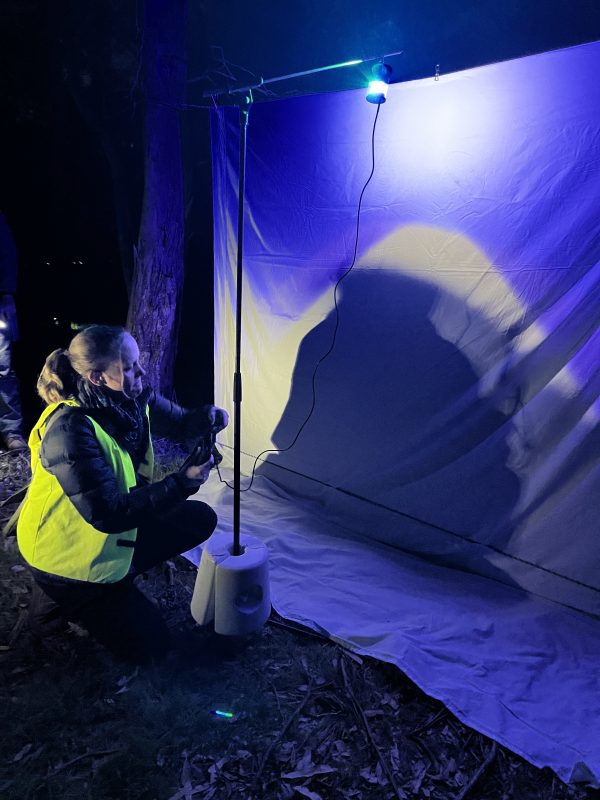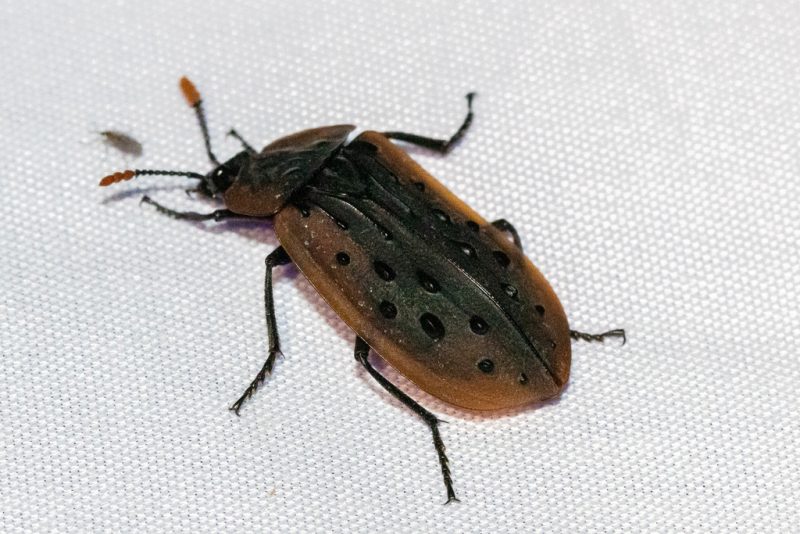Well done to all the observers of this year’s Great Southern BioBlitz (GSB24)! Across the Albury Wodonga region we recorded a total of 305 species! This well and truly surpassed last year’s total of 187. A big thank you to Karen Retra from Wodonga Urban Landcare Network, not only for sharing her extensive knowledge of local fauna and flora and assisting the community to get their records up on the citizen science app iNaturalist, but also for being the number one contributor with an amazing 99 species!
We began the recording period with a walk at Jack Perry Reserve, which is nestled between Victoria Cross Parade and Axford Boulevard. There is a lot going on in this relatively small patch of vegetation! Many wildflowers were just beginning to come into bud including chocolate and bulbine lilies and sticky everlastings, but we did spot the pink lady fingers orchid (Caladenia carnea), early Nancys (Wurmbea dioica), and the sticky hop-bush (Dodonaea viscose).

Some interesting finds were the pimpernel sundew (Drosera glanduligera) whose leaves are covered in glandular tentacles. When triggered, the outer non-sticky snap-tentacles effectively throw the prey into the centre of the leaf where there are sticky glue-tentacles. The prey is then dissolved with enzymes and absorbed. We also spotted Daviesia genistifolia which is a member of the bitter peas and endangered in Victoria.

Our participants were able to practice taking suitable photos for identification purposes, for example, for plants, you might want to include the flowers, leaves, stem/bark, and any fruits. These photos can then be uploaded to iNaturalist and ultimately added to the Atlas of Living Australia. And it’s more than just letting the world know you found something really cool! These records can help scientists studying threatened species and can also inform management decisions.


Our moth night at Castle Creek Conservation Reserve was a great success, after some non-favourable weather during the nights prior. Karen was able to set up a special UV light and a white sheet to convince some moths to land and pose nicely for us. We observed several different species, including the crimson tiger moth (Ardices curvata), the fallen bark looper (Gastrophora henricaria), the long-tailed bombyx (Trichiocerus sparshalli), and the green-blotched moth (Cosmodes elegans; photo thanks to K. Retra).


However, the moth that had everyone ooohing and ahhhing was definitely the large and spectacular emperor gum moth (Opodiphthera eucalypti) with a wingspan of up to 15 cm! These moths do not feed after they emerge and only live for a couple of weeks as an adult, in which time they must mate and lay eggs.
An interesting non-moth visitor was the carrion beetle (Ptomphila lacrymosa; photo thanks to K. Retra) which feeds on rotting flesh and can often be found on road-kill.


After a late night, it was back to Castle Creek the next morning for a daylight walk. We observed some leaf beetles in the genus Peltoschema, which contains some species that mimic ladybirds like our particular find P. basicolle. We also saw another type of leaf beetle known as the eucalyptus leaf beetle (Paropsisterna cloelia), which feeds on leaves of eucalypt trees. Both of the below photos are thanks to Karen Retra.

Then of course we noticed some wildflowers including the urn heath (Melichrus urceolatus), erect guinea flower (Hibbertia riparia), handsome flat pea (Platylobium formosum), common beard-heath (Leucopogon virgatus), murnong (Microseris walteri), and even some leopard orchids (Diuris pardina) still hanging on.

We had a blast at GSB24 and we hope that those that attended are a little more confident and encouraged to go out and record some local species! You can take photos and add them to iNaturalist at any time so why not give it a try?!






